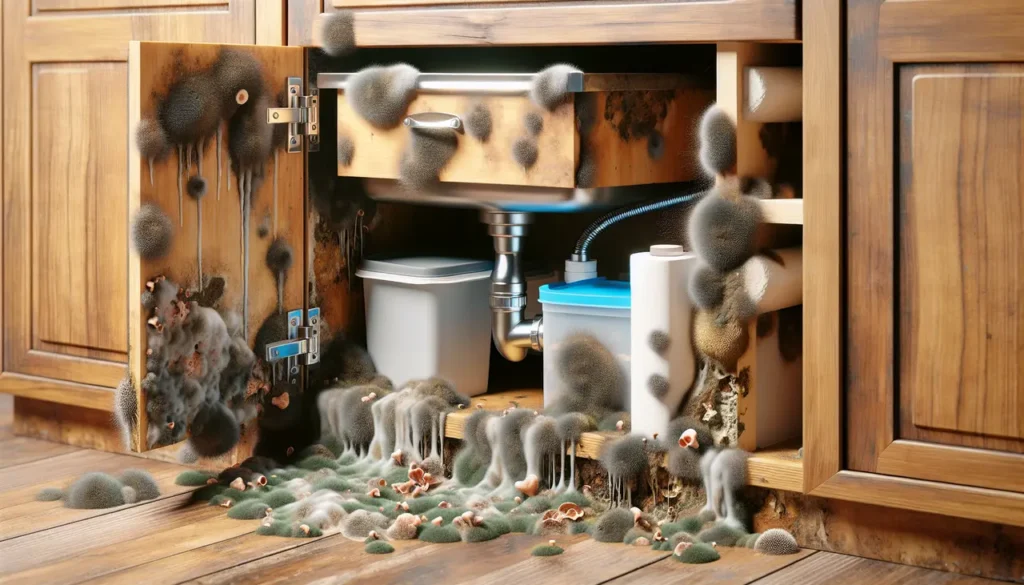
How to get rid of mold
Learn effective mold removal techniques in our blog ‘How to Get Rid of Mold’ and reclaim a mold-free environment today!
Yes, mold remediation and mold removal serve different objectives. While mold removal focuses on merely removing visible mold, remediation addresses the root cause and ensures that the mold does not return. Remediation encompasses assessing the extent of mold, cleaning and removing it, and then restoring the property to its pre-mold condition.
Unfortunately, yes. If the underlying moisture problem that facilitated the mold growth initially isn’t resolved, spores can settle and grow again. It’s crucial to address leaks, humidity, and other moisture sources after mold remediation to prevent recurrence.
The cost of mold remediation varies based on the infestation’s extent, the affected materials, and labor costs in the area. Minor issues might be resolved for a few hundred dollars, but larger infestations, especially in crucial home systems, can run into the thousands. Always seek multiple quotes from certified professionals to get a clear understanding of potential costs.
Mold testing can provide valuable information about mold types and levels in your environment. It may be recommended if there are health concerns or persistent moisture problems.
There are numerous mold species, each with its unique characteristics. Common types include Aspergillus (found in various environments), Cladosporium (often seen on wood and textiles), and Stachybotrys chartarum, often referred to as “black mold,” which produces mycotoxins that can be harmful to humans.
When seeking a mold remediation service, it’s crucial to prioritize expertise and certification. Look for companies with technicians certified by recognized institutions, such as the Institute of Inspection, Cleaning and Restoration Certification (IICRC). Check reviews and ask for references to gauge previous customers’ satisfaction. A reliable company will conduct a thorough inspection, provide a detailed plan for remediation, and stand behind their work with a guarantee. Furthermore, they should be able to advise on preventive measures to avoid future mold problems. Transparency in pricing and a clear communication line are also key indicators of a trustworthy service.

Understanding the various causes of mold growth can help you take preventative measures and address any issues promptly. Regular maintenance, moisture control, and quick response to water-related incidents are key to minimizing the risk of mold in your property.
To prevent mold, focus on controlling moisture. Ensure proper ventilation in high-humidity areas like bathrooms and kitchens. Regularly check for leaks and fix them immediately. Using dehumidifiers and ensuring your home has good airflow can also deter mold growth. Additionally, materials resistant to mold growth, such as certain paints, can be used in areas prone to dampness.
Depending on the extent of the mold infestation, it might be safer to temporarily vacate your home during the remediation process.
In some cases, post-remediation testing can ensure that the mold has been effectively removed. Your remediation professional can advise you on the need for testing.
Not all mold is toxic. While there are thousands of mold species, only a fraction produce toxins. However, any mold can provoke allergic reactions or health issues in susceptible individuals.
Black mold, scientifically known as Stachybotrys chartarum, is a specific type characterized by its greenish-black appearance. However, color alone isn’t definitive. Proper identification often requires professional assessment or laboratory analysis.
Air purifiers equipped with HEPA filters can capture mold spores from the air, reducing the concentration of spores in the indoor environment. However, they cannot address the root cause of mold growth, which is moisture.
Bathrooms are particularly susceptible to mold due to their moist environment. To prevent mold growth, ensure good ventilation, regularly clean bathroom surfaces, fix any leaks promptly, and consider using mold-resistant paint or grout.
While some types of mold pose minimal risk, prolonged exposure, especially to molds producing mycotoxins, can lead to health issues. It’s advisable to address and eliminate mold issues promptly to ensure a safe living environment.

Learn effective mold removal techniques in our blog ‘How to Get Rid of Mold’ and reclaim a mold-free environment today!

Identify mold issues easily with our guide ‘How Do I Know if It’s Mold?’ and take action for mold testing, inspection, and removal.

Discover the significance of mold removal for your Los Angeles home in our insightful blog ‘Why is Mold Removal Important for Your Los Angeles Home?’